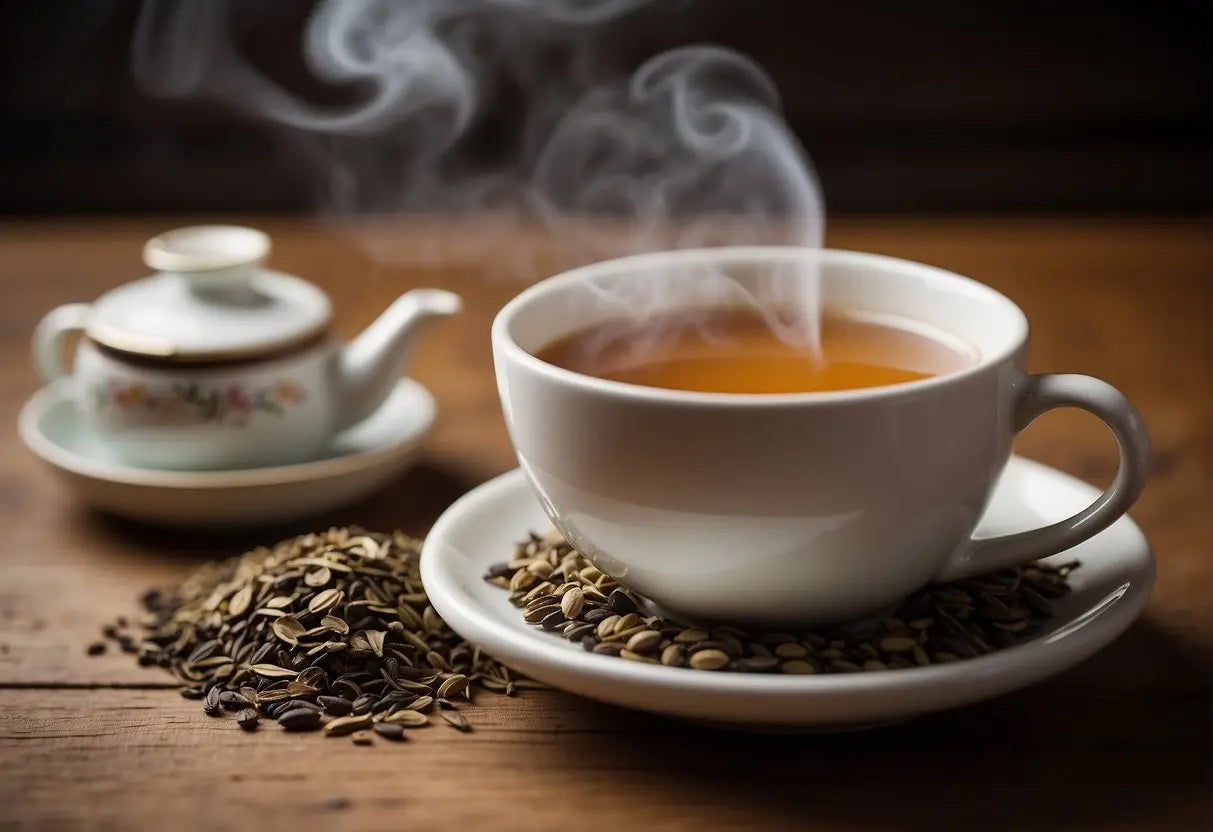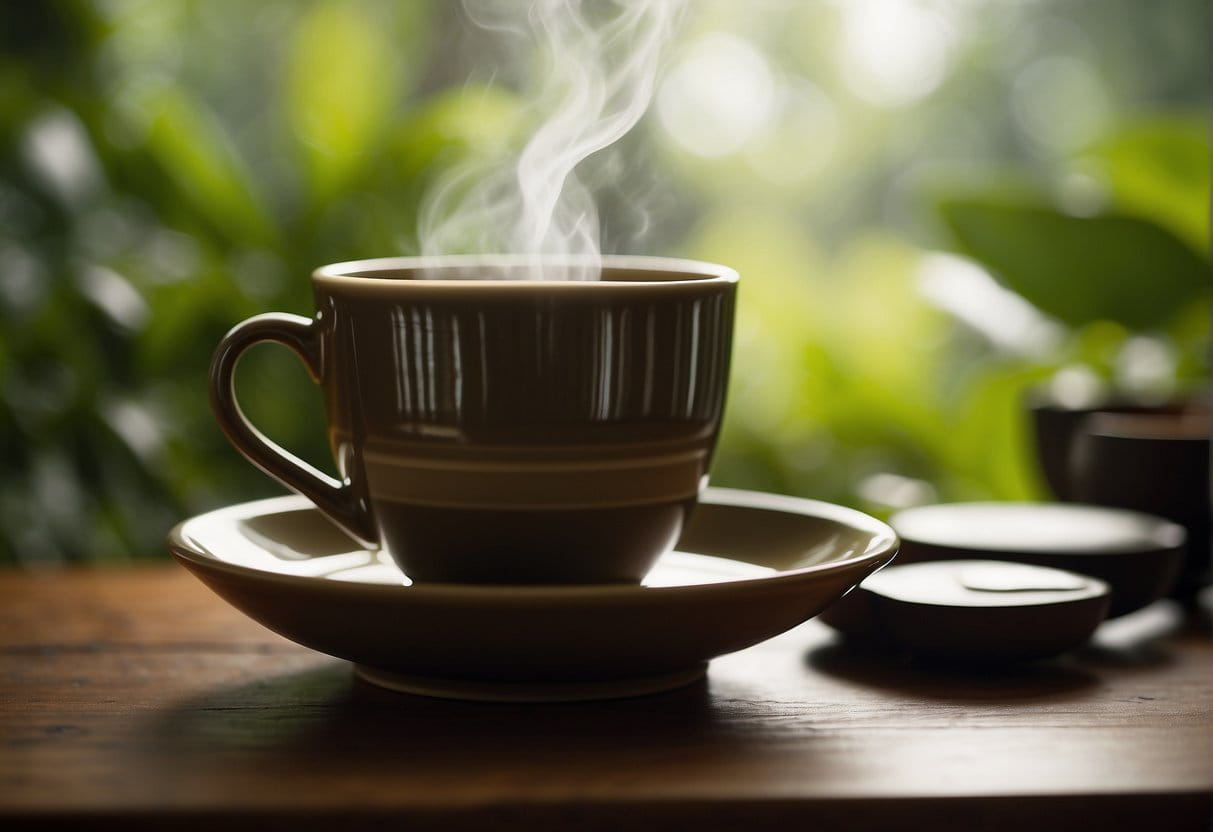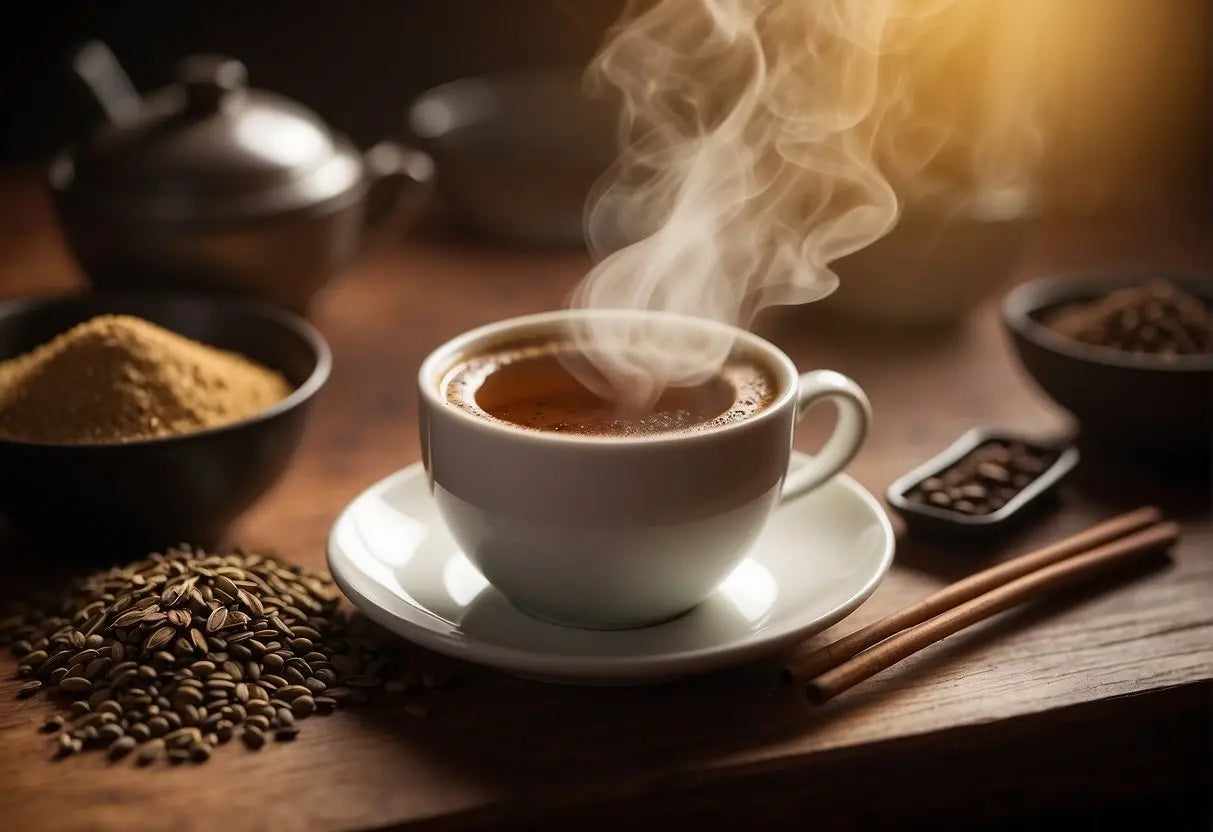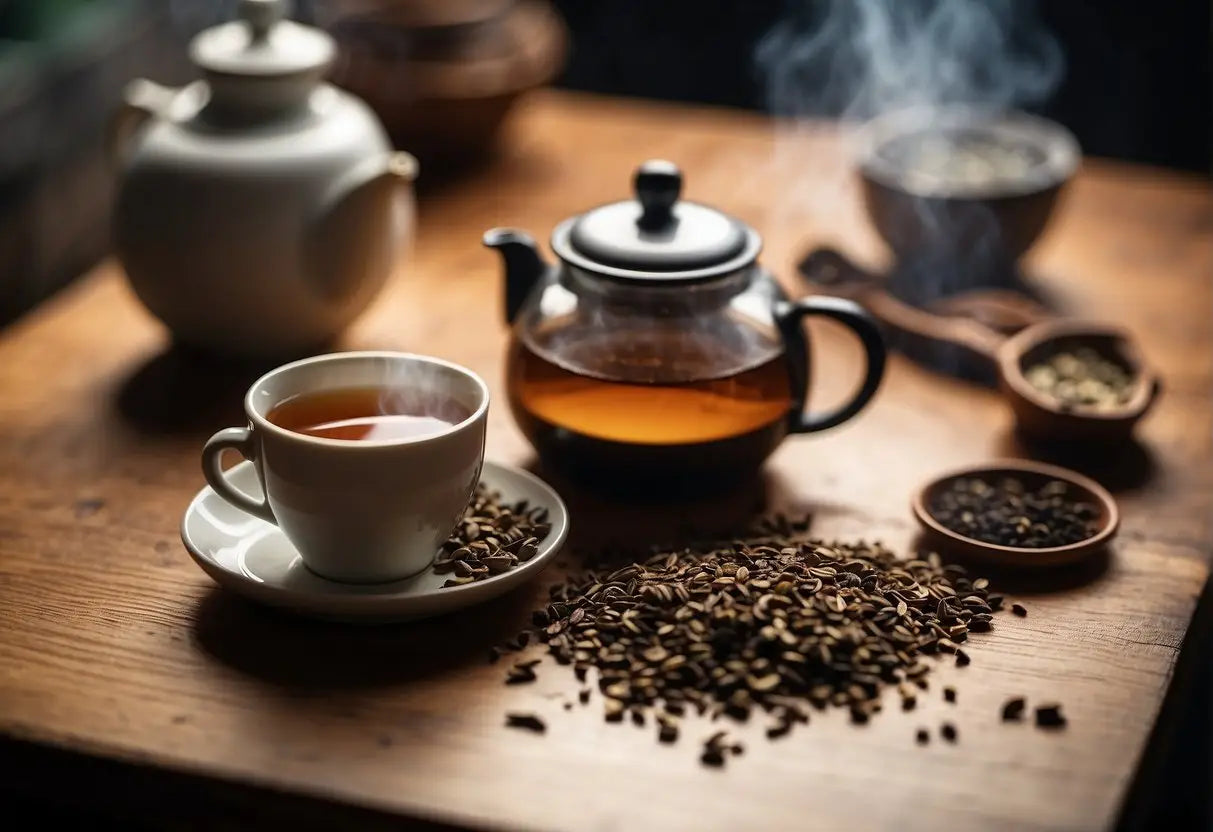Does Hojicha Have Caffeine?
In this overview, you'll learn about Hojicha, including its definition and background. This roasted Japanese green tea is different from other green teas in its flavor and caffeine content.
What Is Hojicha?
Hojicha is a Japanese green tea that is distinguished from others by being roasted in a porcelain pot over charcoal. This roasting process transforms the tea's flavor profile into one that is less astringent and has a smoky, caramel-like taste. The leaves of Hojicha, which can include a combination of leaves and stems, usually turn a reddish-brown color as a result of this unique preparation.
Origin and History
Hojicha's roots trace back to the 1920s in Kyoto, Japan. Originally, it was created as an economical way to utilize leftover leaves, stems, stalks, and twigs from sencha or matcha production. Over time, it became popular for its distinctive taste and lower caffeine content, offering a palatable alternative for those sensitive to the stimulant or seeking a soothing tea experience at any time of the day. Hojicha is now enjoyed around the world and remains a staple within Japanese tea culture.
Bestsellers
Caffeine Content

Hojicha, a Japanese green tea, possesses caffeine though it's known for having a lower content compared to other green teas.
Comparison to Other Teas
- Sencha: A traditional green tea with about 30-50 mg of caffeine per cup.
- Matcha: A powdered form of green tea, containing approximately 70 mg per cup.
- Hojicha: Contains roughly 7.7 mg of caffeine per gram of tea.
Note: These figures can vary based on brewing time and tea leaf quality.
Factors Affecting Caffeine Levels
Leaf Roasting: The process of roasting hojicha leaves reduces its caffeine content.
Harvest Time: Leaves harvested later in the season, as is the case with hojicha, naturally have less caffeine.
By considering these factors, you can better understand the caffeine levels in hojicha relative to other teas.
Health Implications

When exploring the health implications of Hojicha, it's essential to understand that it does contain caffeine, though typically less than other green teas. This affects both its potential health benefits and considerations for individuals who are sensitive to caffeine.
Potential Benefits
Hojicha offers several health advantages due to its constituents. Caffeine, a central component, can stimulate your central nervous system, enhancing alertness and energy. Here are key benefits linked to moderate caffeine intake from Hojicha:
- Mental Sharpness: A moderate amount of caffeine may promote concentration and focus.
- Physical Performance: There are indications that caffeine can improve muscle endurance and strength.
Considerations for Sensitive Individuals
While Hojicha generally has lower caffeine levels, each individual's sensitivity to caffeine varies. You should consider the following:
- Sleep: Caffeine can disrupt your sleep patterns, especially if consumed later in the day.
- Anxiety: For some, even small amounts of caffeine may increase feelings of anxiety.
Remember to monitor your body's reaction to Hojicha and adjust your consumption accordingly.
Brewing Hojicha
When you brew Hojicha, the flavor and strength of the tea can be significantly affected by the brewing time and the temperature of the water you use.
Lao Ban Zhang
Impact of Brewing Time
Brewing Hojicha for a shorter time results in a milder flavor, while a longer brewing time can bring out a deeper taste.
- 1-2 minutes: Light, subtle taste
- 3-4 minutes: Richer, more robust flavor
Impact of Water Temperature
The temperature of the water is also crucial in the brewing process of Hojicha.
- Boiling (100°C/212°F): Traditionally recommended, extracts full range of flavors quickly
- Below boiling (~90°C/194°F): May result in a smoother and more mellow taste
Types of Hojicha

Hojicha is a Japanese green tea distinguished by its roasting process, which gives it a unique flavor and lower caffeine content than other green teas.
Hojicha Powder
Hojicha Powder is finely ground roasted green tea leaves. You can use it to make drinks like lattes or incorporate it into cooking and baking for flavor. It dissolves easily, making it quite versatile.
Roasted Varieties
Roasted Varieties of hojicha are made by roasting tea leaves, stems, or twigs at high temperatures. The roasting level can vary, resulting in a range of flavors from light and toasty to deeply roasted. Each variety offers a unique balance of taste, aroma, and caffeine content.
Hojicha in Culinary Uses

Hojicha, a Japanese roasted green tea, adds a smoky twist to various dishes. The tea's robust flavor complements sweet and savory recipes. Here’s how you can incorporate hojicha in your cooking:
Desserts:
- Cakes & Pastries: Infuse hojicha into cakes or buttercream for a subtle tea flavor.
- Ice Cream & Sorbets: Blend hojicha powder with your base to create a unique frozen treat.
- Chocolate: Pair hojicha's earthiness with dark chocolate for sophisticated truffles or bars.
Beverages:
- Lattes: Whisk hojicha powder with hot water then add frothed milk for a comforting latte.
- Cocktails: Steep hojicha to make a tea base for cocktails, combining with ingredients like whisky or gin.
Savory Dishes:
- Marinades: Brew hojicha and use it as a marinade base for meats or tofu.
- Rice Dishes: Replace water with hojicha when cooking rice to infuse the grains with a tea flavor.
- Sauces: Grind hojicha leaves to a powder and mix into sauces for an added depth of flavor.
Table Example: Quick Guide to Using Hojicha
| Application | Recommendation |
|---|---|
| Baking | Use hojicha powder in the batter. |
| Drinks | Brew and mix with milk or alcohol. |
| Cooking | Steep or use powdered form in recipes. |
When using hojicha, start with small amounts to gauge its influence on your dish's overall taste. Culinary experimentation with hojicha can lead to delectable discoveries that delight the palate.
Frequently Asked Questions

Caffeine content in hojicha varies and is an important consideration for many. This section addresses common inquiries related to its caffeine levels compared to other popular beverages.
How does the caffeine content in hojicha compare to that of coffee?
Hojicha typically has less caffeine than coffee. While a standard cup of coffee can contain about 95 mg of caffeine, a cup of hojicha may have approximately 7.7 mg of caffeine.
Can you compare the caffeine levels in hojicha and matcha?
Hojicha has lower caffeine levels than matcha. A typical serving of hojicha might have 7.7 mg of caffeine, whereas matcha can contain around 70 mg of caffeine per serving.
Is there caffeine in a hojicha latte and how much?
Yes, a hojicha latte contains caffeine. The exact amount varies depending on the hojicha tea concentration but is generally around 7.7 mg of caffeine for each cup of hojicha used.
How does hojicha caffeine content differ from that of black tea?
Hojicha generally contains less caffeine than black tea. A cup of hojicha has around 7.7 mg of caffeine, whereas black tea might contain 40-70 mg per 8 oz cup.
Is it safe to consume hojicha during pregnancy due to its caffeine content?
Hojicha, with lower caffeine levels of around 7.7 mg per cup, is considered safe in moderation during pregnancy. However, it's recommended to consult with a healthcare provider regarding caffeine intake during pregnancy.
Does consuming hojicha help with relaxation or does its caffeine level cause sleep disruption?
Hojicha can be relaxing, due to the reduced caffeine content compared to other teas and coffees. At about 7.7 mg of caffeine per cup, it is less likely to disrupt sleep for most individuals.
← Older post Newer post →











